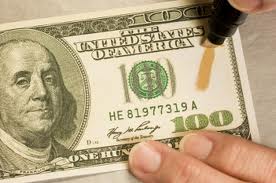By Jacob Harvey –
One pen mark on a $10 bill can ruin a kid’s day.
Ask Will Downs, a Penn Manor senior, who tried to pay for his lunch in the school cafeteria recently with, unbeknownst to him, a counterfeit bill. Downs had received the bill as change for a $20 bill from the Turkey Hill gas station in Millersville, PA.
“We don’t check $10’s because we get so many bills we don’t have the time to check smaller bills like that, but we do check like $50’s and stuff in the light to see if people are counterfeiting the big bills,” said an employee at Turkey Hill.
The counterfeit $10 bill was flagged by Lisa Caldwell, a member of the Penn Manor cafeteria staff, who reported it to Doug Eby and Eric Howe.

“To check the bill we (lunch ladies) use a pen with special ink that will turn from yellow to brown on a faked bill,” said Caldwell. “The second I marked the bill it turned noticeably brown and I put it off to the side and brought it to the administrators attention.”
After Doug Eby received the bill, he brought it to school Resource Officer Jason Hottenstein’s attention and turned it in to him. Since it is a serious federal issue, the school couldn’t take part in investigating the counterfeit bill.
Once Hottenstein received the bill, he turned it back into the cafeteria. The cafeteria then turned the $10 bill into their bank who does an investigation to see who needs to be punished and how to go about contacting them.
“Both Mr. Howe and Mr. Eby came up to me and asked me how I got the $10. I told them I got it from the Turkey Hill in Millersville, and then they made me pay for my lunch again,” said Downs. “When they told me that I had to pay for my lunch again, I was so mad. I would have to say on a scale of 1-10 I was like a 7.”
Downs talked to administrators about getting his money back. They turned him down, saying that him paying with a counterfeit bill was similar to a kid trying to buy lunch with monopoly money.
In turn Will Downs lost $10, had to repay for his lunch which cost him around $5, and he had to give back all the change he got from the ten.
Ultimately, Downs spent nearly $20 on one cafeteria lunch.